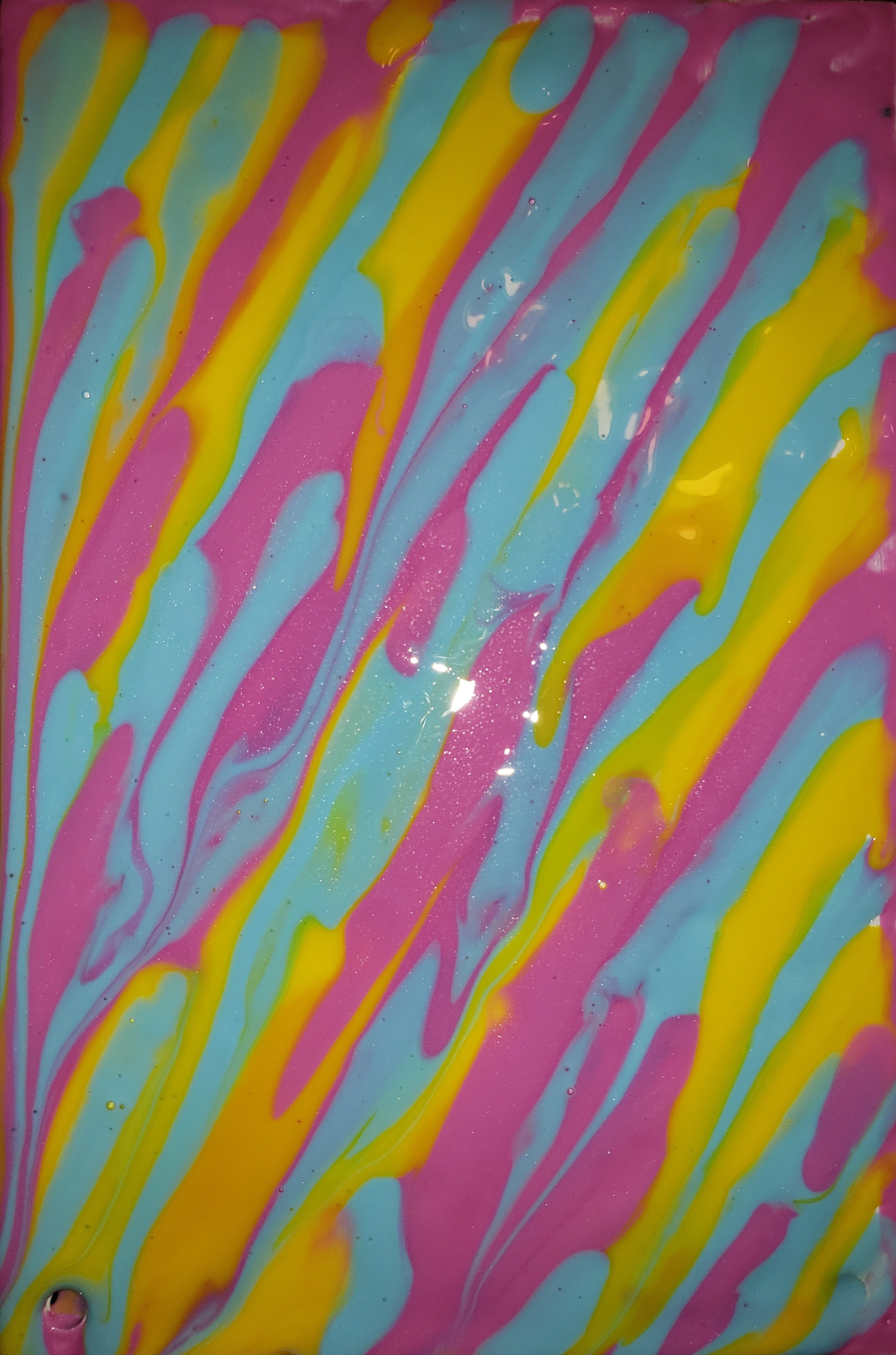
Five Pouring Abstract Art on Wood Acrylic Paintings
Subscribe to our Newsletter for more artworks and coupons
I finally got around to uploading my newest pouring painting videos. If you want to see the making of these paintings, you can check them out in my Artsy Sister Tiktok and Youtube accounts.
Unlike my previous pouring paintings, these ones were made on thin pieces of wood. I do not remember what type of wood I used.
I had run out of canvases, so, I used a small piece of wood instead. Those woods were part of a craft project that I forgot all about.
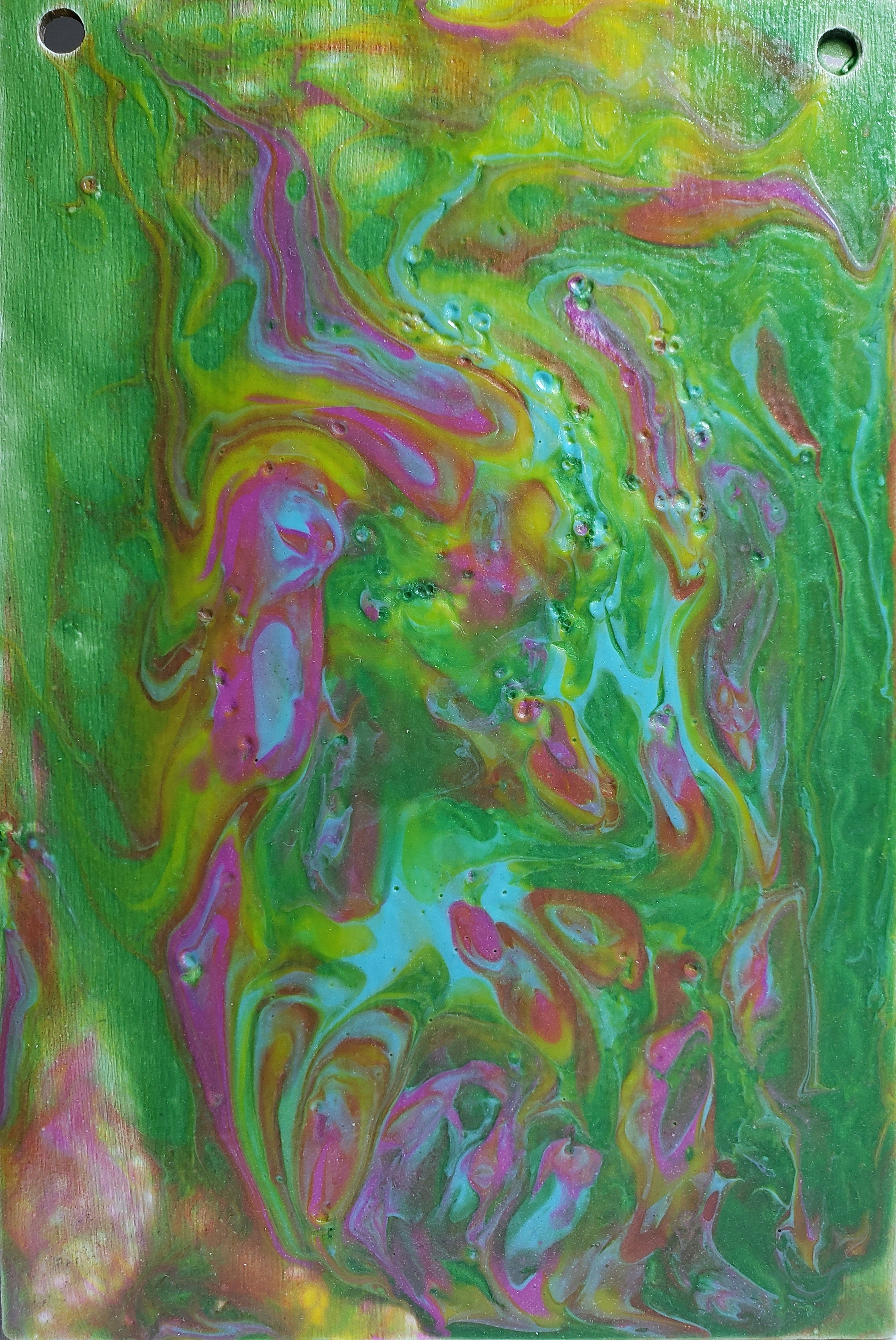
So, I used them for pouring paintings instead. I added a bit of gesso to the piece of wood. Wood tends to eat up paint like a sponge.
So, I needed to put some distance between the acrylics and the wooden surface. With that done, I was ready to begin my latest pouring painting series.
Changing the surface made a huge difference. The smooth wooden surface made the paint flow a lot faster and easier.
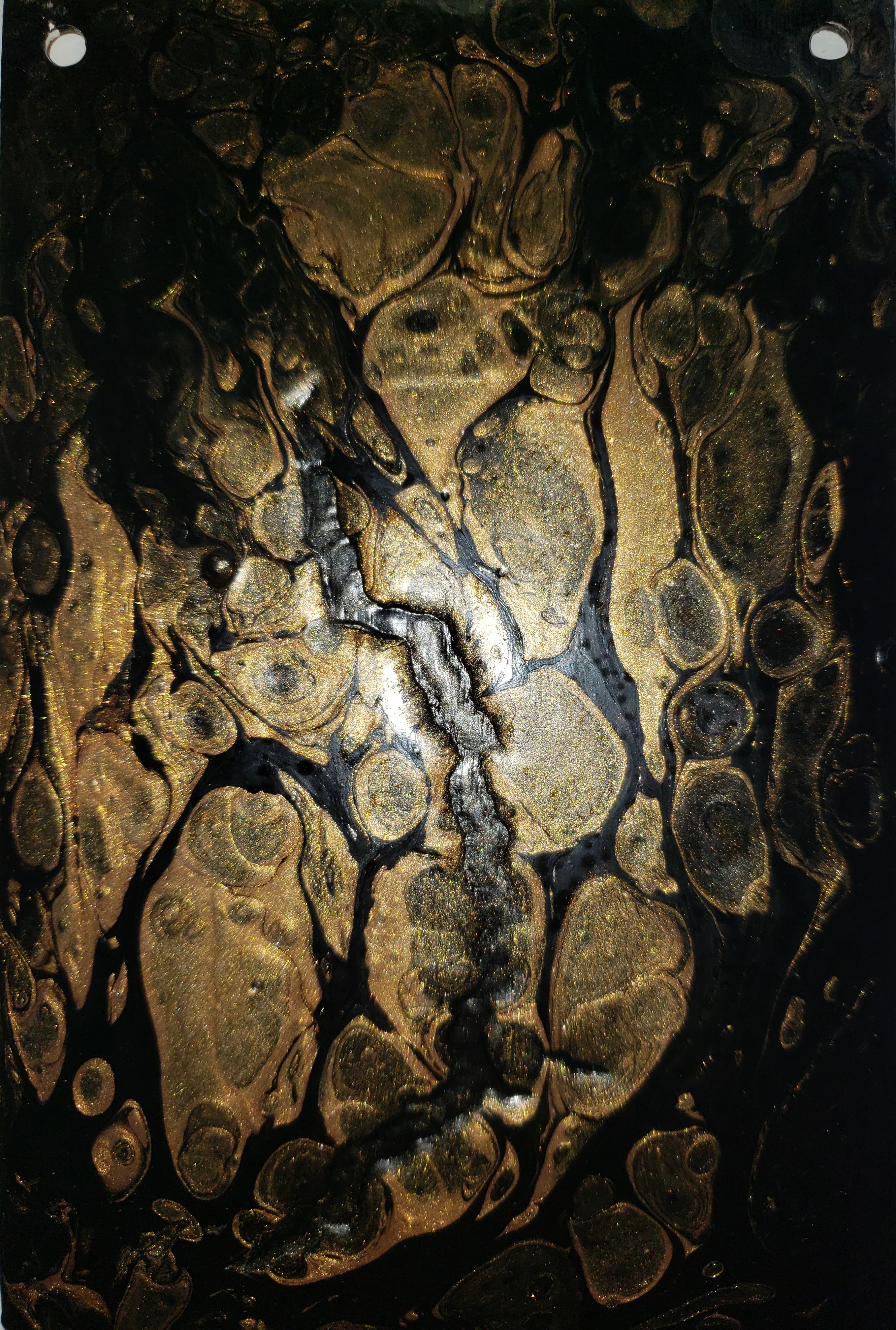
I was able to also use less paint, in order to make a finished painting. Canvases were originally not the main painting medium. They became predominant because of storage reasons.
Plus, it was cheaper for painters back in the day to use a piece of cloth to make a painting. Over the years, Canvases became the prominent medium to make paintings.
Based on my most recent experiments with painting, I have found that wood just works a lot better with acrylics. I might need to make a few more pouring paintings to arrive to a definite conclusion.
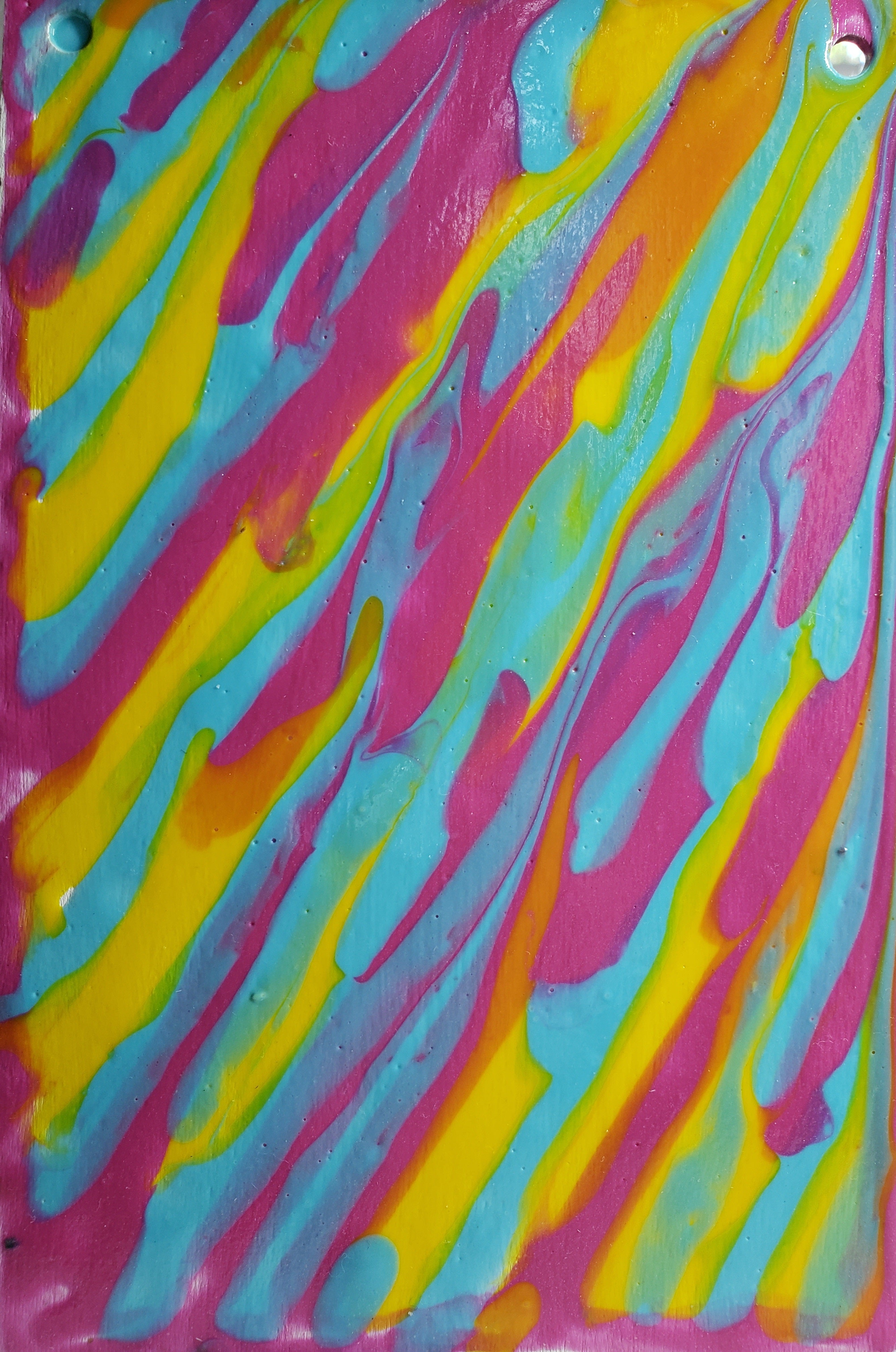
This is why it is important to always change up your painting surfaces. It makes a huge difference in the final result and the execution.
Above, you can see the differences between the wet acrylic painting and the dried form. The first five paintings show the finished product.
There wasn’t a huge shift in the color of the paintings. In a few, you can kinda see the wood grains underneath. This works fine more or less.
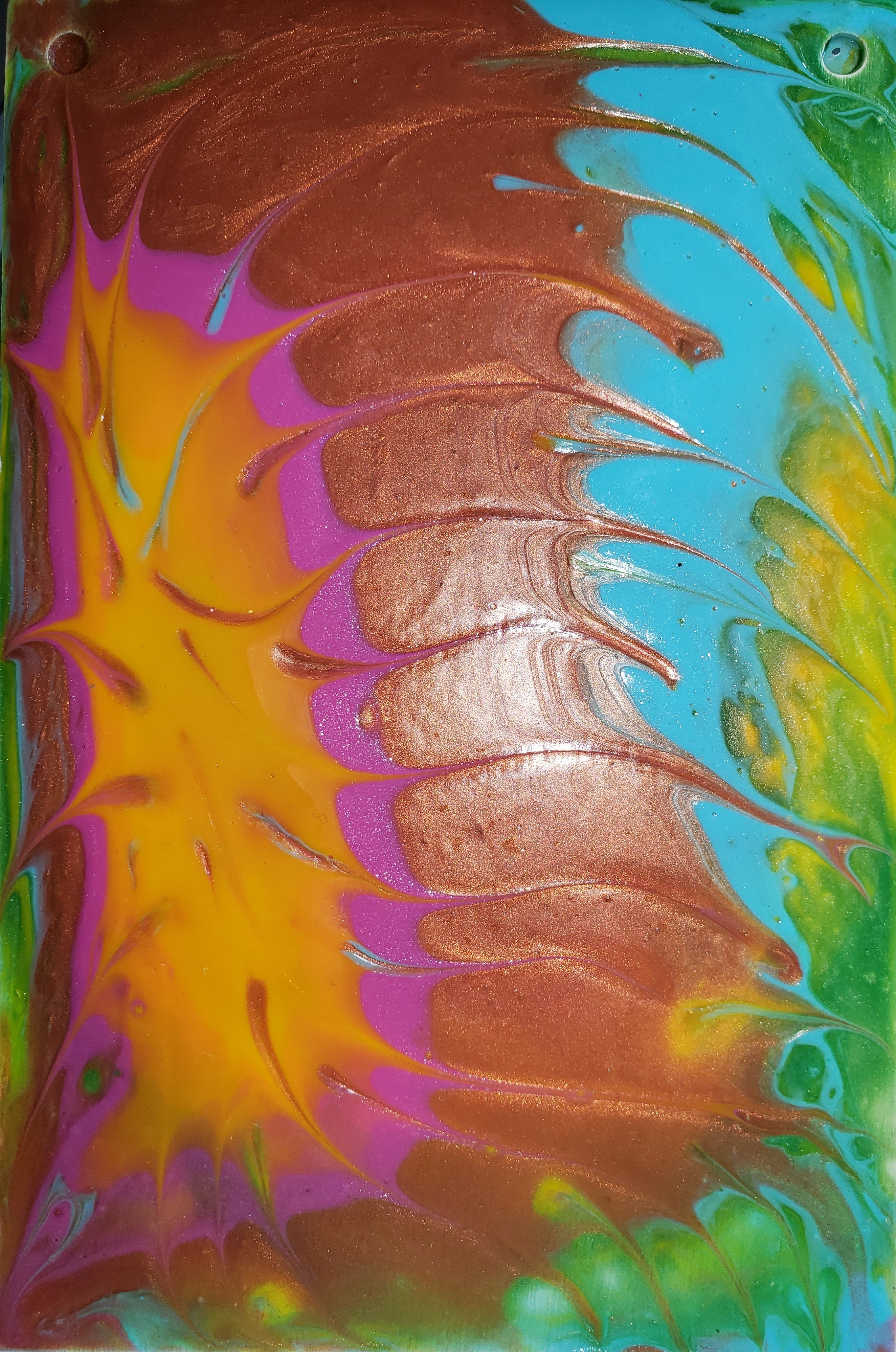
If you do not like seeing the wood, just add to coats of gesso to the painting before making your pouring painting.
In one of the paintings, I added a pint of salt. I wanted to see what it would do to the final painting. It created some interesting effects that kinda resemble bullet holes.
The black and Gold painting was made with left over acrylics. I have gotten into the habit of collecting the leftover paints in a bottle.
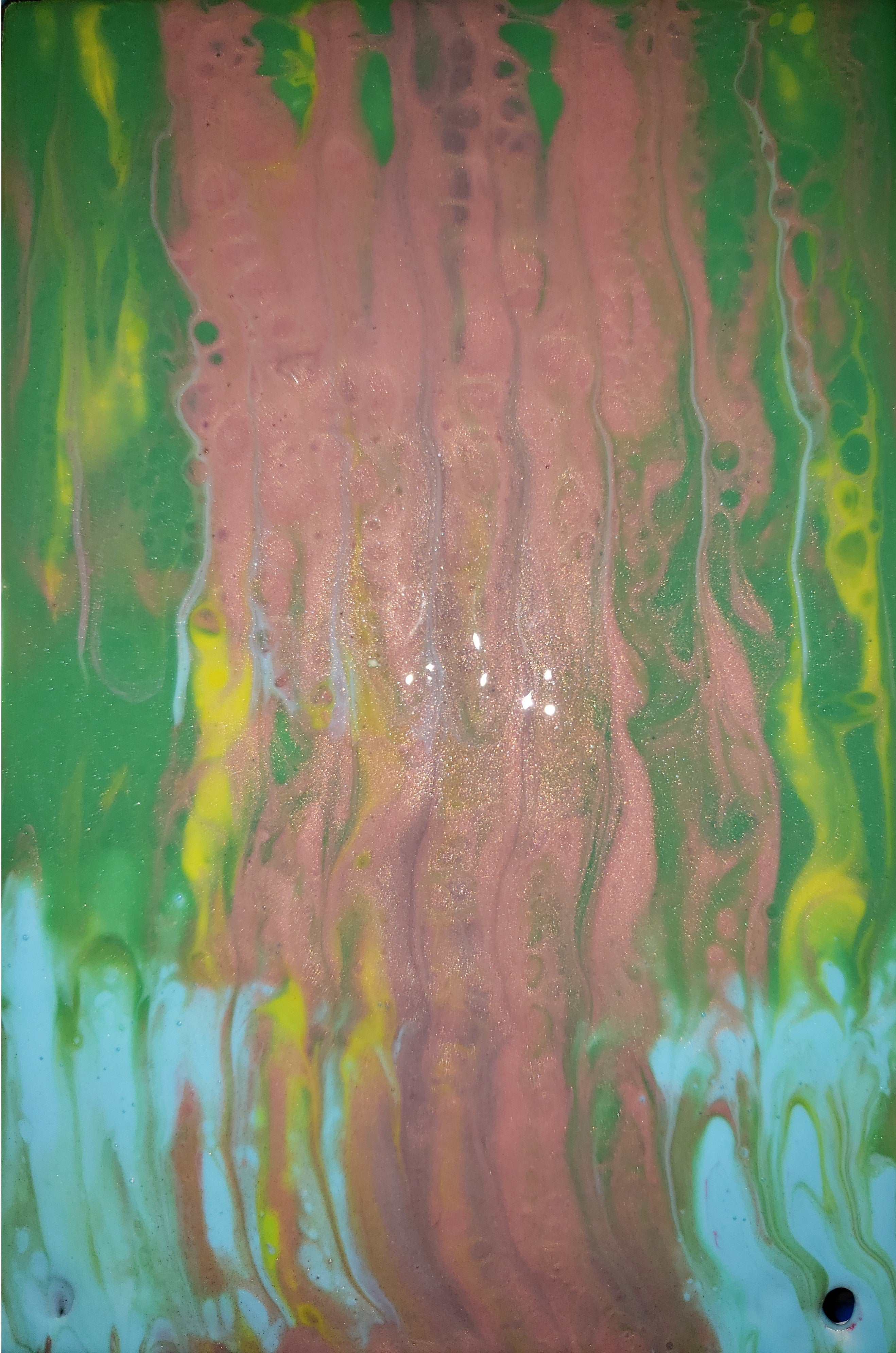
I didn’t have any idea of how it was going to look in the end. At first, I started panicking because the painting was coming out in one color.
When the gold specs began to manifest, it was a relief. The final result was an impressive looking pouring painting.
When it dried, the paint cracked a lot, but it was fine. The ridge that it created was particularly interesting.
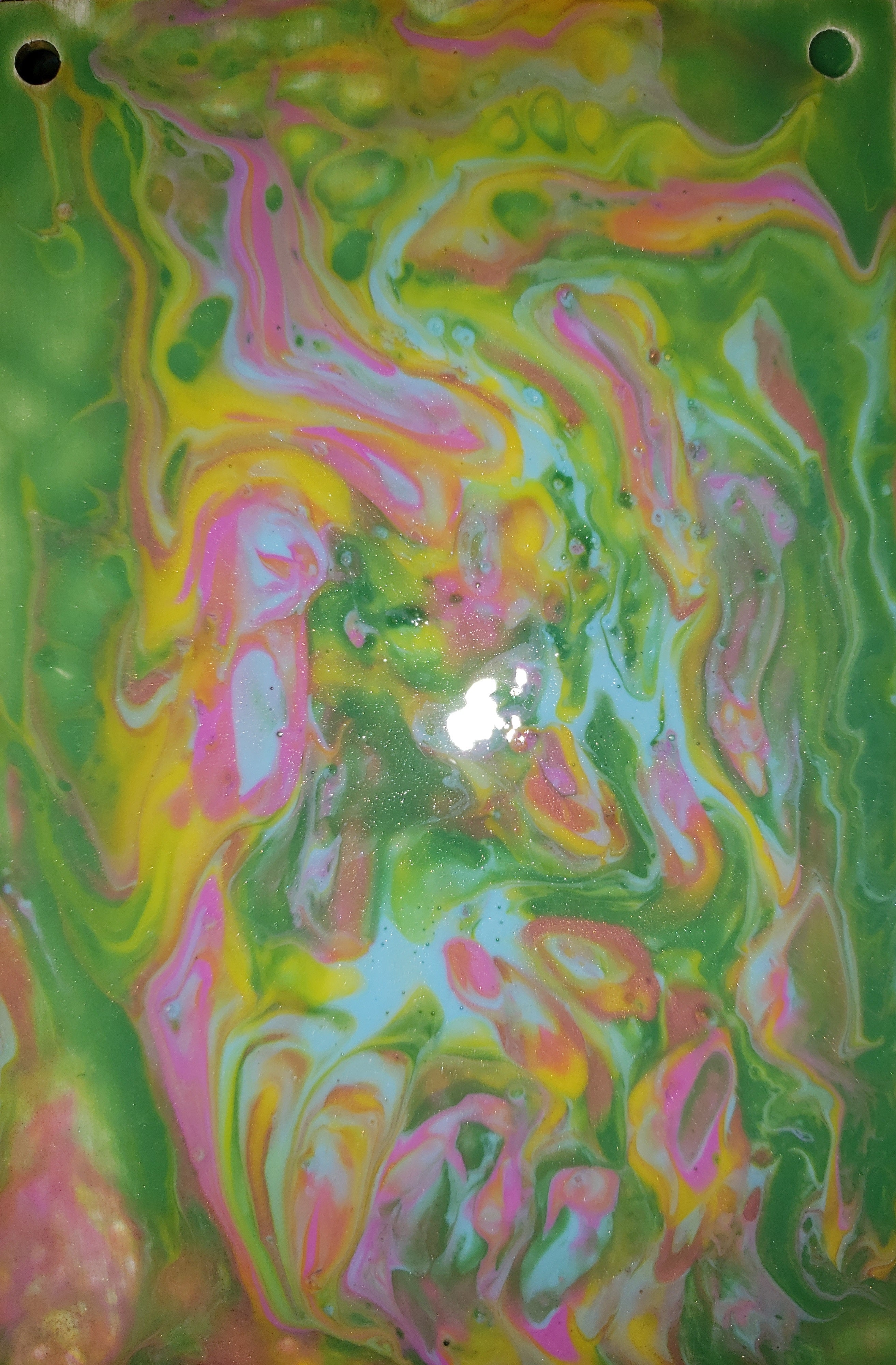
It almost looks like a river. So, if your paint cracks it is not the end of the world. Think of it as a happy accident.
You learn a lot from watching how paint dries. Due to the different mediums, at times, there is a huge difference between the wet painting and the dry acrylic painting.
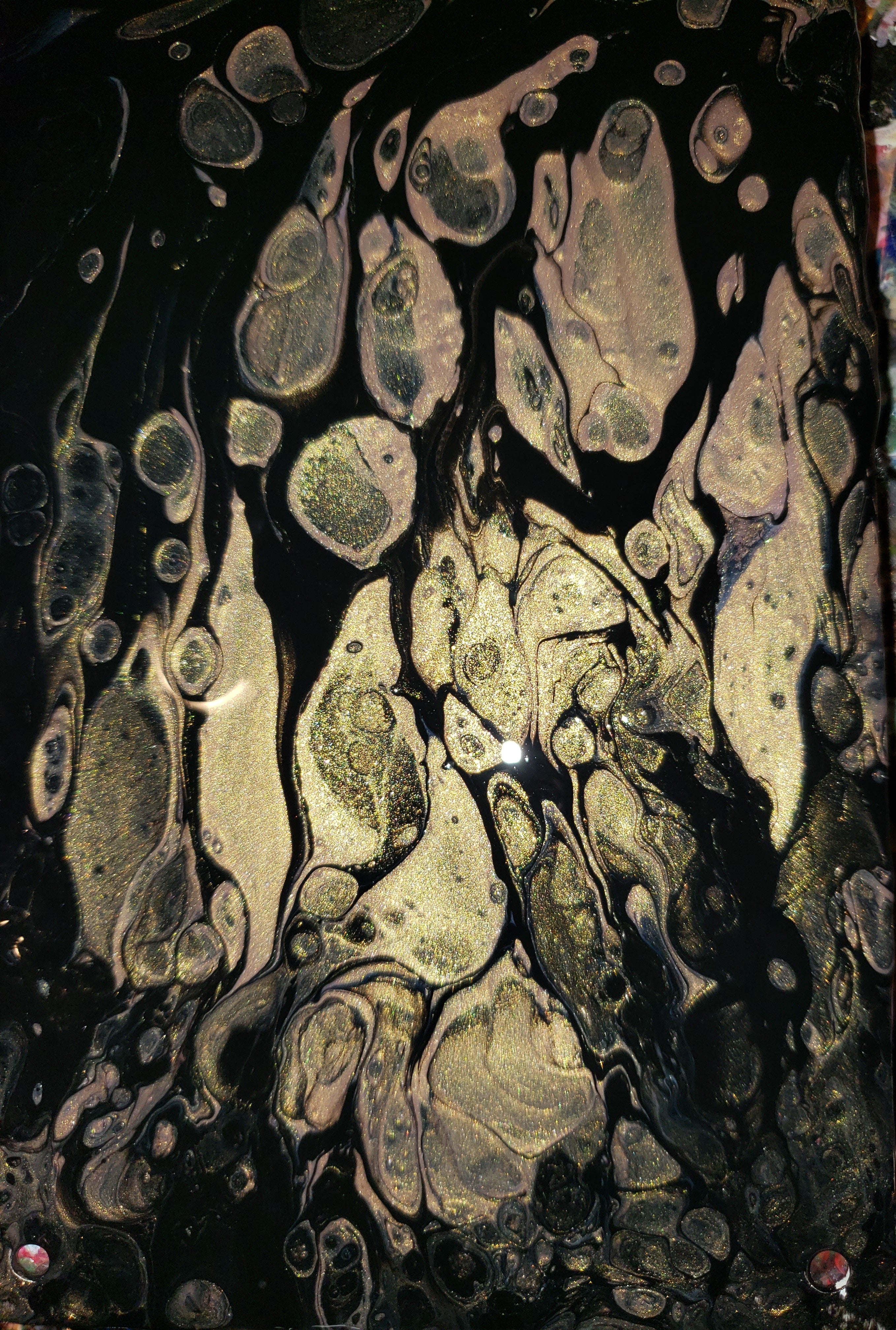
This is why it is important to take a photograph of the painting while it is wet.
It will at least give you a digital version of a version of the final product that you might prefer.
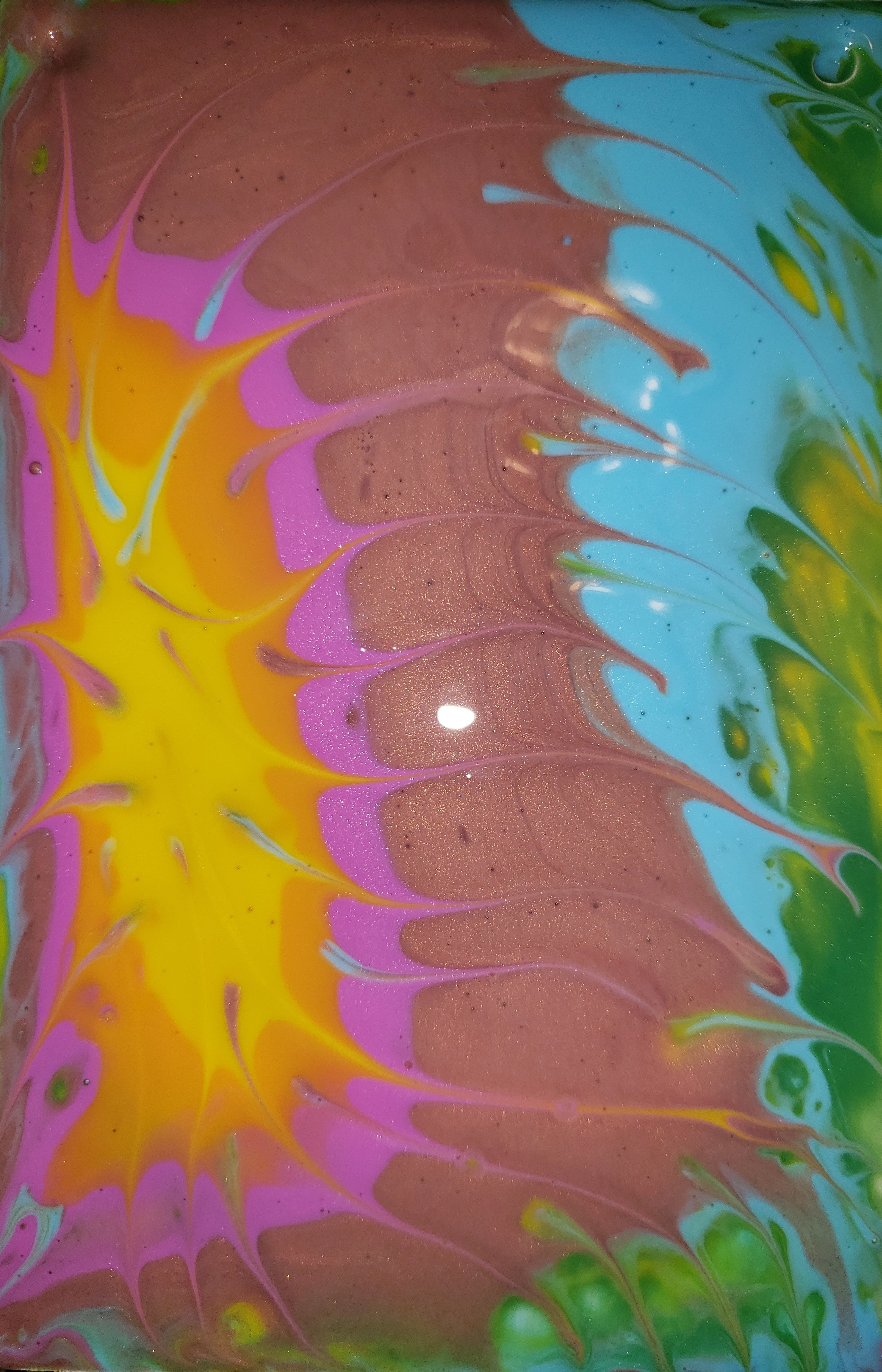
Anyhow, I hope that this blog gives you some fun ideas for your acrylic pouring painting projects.
This is Teresita Blanco, the Artsy Sister. Bye, bye and God bless.
